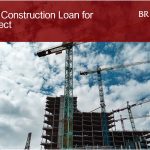Real Estate Development Strategy for Developers
Development Strategy for Real Estate Developers begins with a vision; an idea coupled with the skills, desires, and resources necessary to bring the vision to fruition.
Formulating the development strategy is a long process and includes site selection and feasibility analysis, the creation of the project pro forma, and an in-depth analysis of the project appraisal and several processes crafting a Development Strategy for Real Estate Developers
1. Important Definitions about Development Strategy
These definitions set the framework for the respective roles of various players in the development process:
a ) Developer
In executing a Development Strategy for Real Estate Developers we must first define a developer. This can be an individual, firm, or entity that locates and secures control of a parcel of land, conceives and appropriate project to be built on that land and obtains the needed regulatory approval for that project.
The developer typically provides the seed capital necessary to get a project to the point where all the development rights are vested.
This amount is often several percentage points of the forecasted value of a project; that is a hundred million projects can easily require several hundred thousands of naira to be fully permitted and quite possibly substantial additional funds.
These funds are usually reimbursed at the start of the construction or at the close of the construction loan by the investor providing the equity for the project. The developer also usually receives a “promote” or return for the time he has invested and the risk he has taken in putting together or promoting the project.
b ) Builder
The general contractor does the actual construction of a project, generally by bidding the job out to a variety of subcontractors. The builder must “ bond ” a project, that is, provide assurances from a third party insurer, guarantor, or surety that the builder will provide the funds to finish the project for the contracted price if the builder does not perform as agreed. The contract may be cost plus a fee or fixed price.
c ) Investor (owner)
An individual, firm or other entity that provides the equity capital necessary to build a project. Frequently investors do not commit themselves until the project is fully vested with development rights. The investor must often assume personal or corporate liability for the construction loan.
d ) Lender
An individual, firm or other entity that provides the debt capital necessary to build the project. The lender will not commit until the project is fully vested with development rights.
e ) Property Manager
Typically, an individual, firm or other entity who handles property/facility management once the project is completed and who also may handle the marketing and management of the lease-up and stabilization phase of the project.
2. The Concept: Product Identification and Establishment of Criteria
Most developers tend to specialize within a particular sector of development e.g office complex, strip malls, industrial warehouse, residential communities, high rise. Even within a particular sector, there is a tendency to further sub-specialization. The selection of a development concept, product identification, and establishment of development criteria are often a matter of strategic pre-selection based on the developers’ prior track record and the company’s chosen focus.
Although some expansion is normal and even expected – that is, into an adjacent state or sub-sector— a developer choosing to stray too far from his field of expertise will find it more difficult to attract debt and equity capital.
3. Seed Capital and Assembling the Team
Most developers have existing sources of seed capital, internal or external, that can be tapped for projects. Almost as a matter of definition, a developer without access to some sort of capital is not a developer.
Most experienced developers also have a well-vetted team, both internally and externally, with whom they have worked over the years. In that case, assembling the team may be as simple as gathering the veterans of prior developments together and reviewing the development criteria, alerting them to block out time on their work schedule as appropriate, and receiving feedback as to changing market or regulatory conditions.
If a developer is venturing into a new market or sector he may choose to assemble a new team with experience in that area. There are many ways to find out who the respected professional are in any given area.
Appraisers, real estate brokers, title companies and real estate lawyers are good sources of information.
4. Market Area Identification
An interesting question is raised as to which is better: a fantastic site ( great visibility, choice demographics, excellent drive-by traffic ) in a so-so market ( mediocre occupancy, slightly below average rent etc) or a so-so site ( nearby power lines, bad sightlines, questionable surrounding area ) in a fantastic market ( robust rent growth, a booming economy, tight and raising occupancy).
Unless there is a reason to believe that the so-so market conditions are permanent rather than just a phase in a normal business or real estate cycle), choosing the best site over the best market is the prevailing choice, in theory, because markets recover but the site cannot move.
Although the theory is a simplification, in that the factors that make a site great can change (traffic patterns evolve and demographics are not set in stone), site characteristics do tend to be more stable than market conditions.
Every developer produces a product or service designed to meet a particular need. To improve one’s chances, it is wise to select a market that is not already saturated by competition, a market that needs a product that can be produced at a competitive price with a good quality and workmanship, a market that shows signs of future growth and improvement.
A good indication of current market needs can be found by determining the present vacancy rate, current construction activity, and forecast of growth in demand.
5. Land Acquisition: Optioning the Land, Securing Control
After initial investigations indicate that there is a reasonable probability of success for the proposed project on a given site, several important steps must be taken. The land on which to construct the project must be secured, regulatory approvals must be obtained, and capital commitments for both the equity and debt portions of the financing must be received.
It’s advisable for developers to gain control of the land via an option to purchase the land.
An option to purchase is the right, for a limited period of time, to purchase the land at an agreed-upon price and terms. This option minimizes the loss of capital if for any reason construction does not go forward. More than one project has been stymied because of the last-minute regulatory issue, interest rate hike, construction cost jump, or other market change.
Options may be structured in as many ways as a creative developer or his lawyer can devise, but frequently there is an up-front monetary payment and additional monthly payments. These may or may not be applied to the purchased land.
Often a landowner will give a reputable developer a free, 45-to-90-day “ look-see ”; that is, the developer puts soft capital ( refundable) to show good, marketable title with no undisclosed defects or quiet partners who might surface is the last moment with additional complications
Conversations should be conducted with the appropriate planning officials to discuss the viability of the proposed projects from a regulatory point of view. The option should include full rights to go onto the property, conduct studies ( environmental audits, etc ), do tests ( soil borings, etc ) and generally do further due diligence relating to permits necessary for developments.
In hot markets or for a top-grade site, a landowner may adopt a take-it-or-leave approach and insist on an immediate purchase. In that case, the initiative and advantage lie with the developer who has access to ready capital and whose local market knowledge makes him plunge prior to full vesting of all development rights
Sometimes a landowner is willing to contribute her land in return for an interest in the development or provide a long term lease. Such a lease would have to convey full development rights, automatically be subordinate to any financing, and typically be for a minimum term of 30 years; 99 –years are not uncommon.
6. Site Approvals and Building Permit
Once the proper land use designation and zoning are clarified, the next step is usually to develop a site plan that shows where the buildings and parking will be located on the site.
It generally shows how the developer intends to look into the necessary utilities ( water, sewer, electricity); comply with various regulations such as building height, lot coverage ratios, floor-area ratio and landscaping and demonstrate compliance with local transportation plans and water management.
The length of time necessary to obtain a building permit is a critical factor in development. It may take weeks or months between the initial submission of completed plans and the receipt of approval to commence construction.
Often a site-clearing permit or even a foundation permit can be obtained in advance of the full permit, allowing substantial progress to be made and helping a fast track project stay on time.
7. Construction Financing and Implementation
A developer will find it essential to develop a general familiarity with the financial markets that have the capability to fund such projects. In addition, a developer must develop access to key people within those markets (such as bank officers and mortgage brokers). One or more sources of funding for the project should be located early on, either by sending out preliminary project packages.
Potential lenders may respond with a term sheet, non-bidding, highly-qualified letter stating the amount and the terms under which they would lend on the project as presented.
An investor provides the equity capital necessary for actual construction to aid the debt capital to be secured. The developer usually provides the seed equity necessary to get the project to construction. Investors can be individuals of high net worth, insurance companies, and investment banks.
Developers may have established a working relationship with an investor or group of investors. A track record of successes tends to attract a following, and a successful developer may accumulate the funds to make a significant investment in his own projects.
A developer may choose the desired builder early in the process and have that builder work closely with the architect in designing the project, providing ongoing feedback on best construction methods and material.
After the design is completed, the financing committed, the land secured, the permits obtained, and decisions reached on any consequential details, the contract is awarded for construction of the project
How Brickstone Can Help?
Brickstone is an Infrastructure Accelerator with strong competencies in the Appraisal, Transaction Advisory and Project Development of large scale industrial and infrastructure projects in Africa. In executing our advisory process, Brickstone combines investment acceleration, capacity building and hands-on advisory skills. This is to navigate the complex structures which describe today’s financial markets; and an unsurpassed creative approach that differs from the traditional consulting firm
Why not contact us to make your Project Happen
Our advisors and consultants would be able to schedule an online meeting with you to discuss your project with the overall objective of seeking ways to achieve the “bankability” and protection of the long term asset value of your project. Request a Meeting Now







